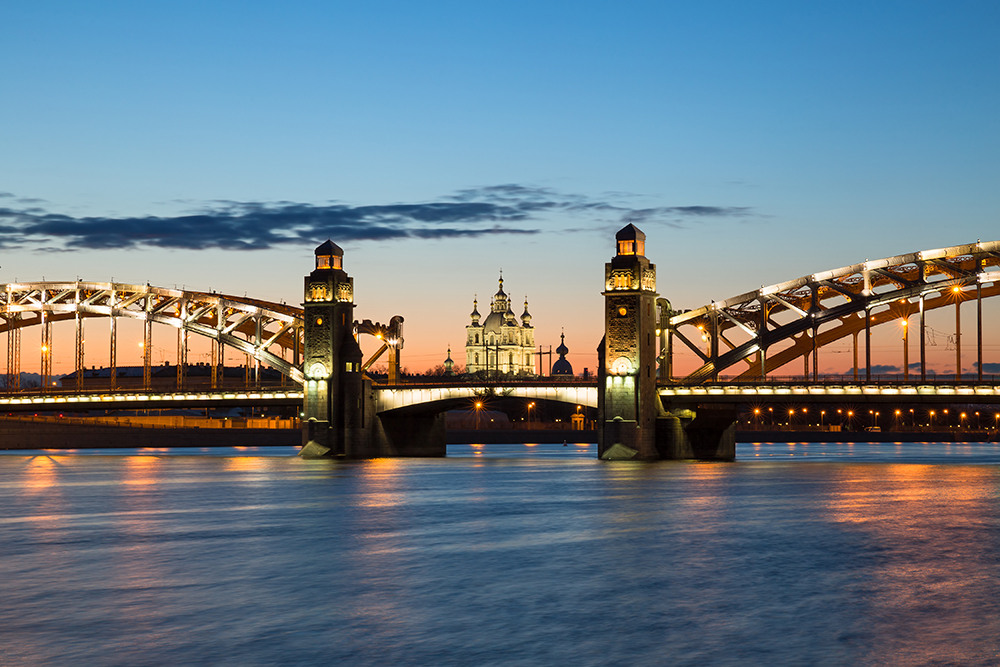Neva River

Nestled amidst the picturesque landscapes of northwestern Russia flows the Neva River, a waterway steeped in history, culture, and significance. From its origins in Lake Ladoga to its convergence with the Neva Bay of the Gulf of Finland, As the fourth-largest river in Europe in terms of average discharge, trailing only behind the Volga, the Danube, and the Rhine River. The Neva has served as a lifeline for countless communities and a symbol of Russia’s cultural heritage. In this comprehensive exploration, we delve into the reasons why the Neva River holds such immense cultural importance, tracing its impact on art, literature, architecture, and the collective identity of the Russian people.
A Conduit for Commerce and Communication:
Throughout history, the Neva River has served as a vital artery for trade and commerce, connecting inland regions to the Baltic Sea and beyond. Its navigable waters facilitated the exchange of goods, ideas, and cultures, fostering a vibrant atmosphere of economic activity and cultural exchange along its banks.
The city of St. Petersburg, situated at the mouth of the Neva River, emerged as a bustling center of trade and commerce during the imperial era. The river served as a gateway to the riches of the Baltic region, attracting merchants, artisans, and entrepreneurs from across Europe and beyond. The bustling ports and harbors along the Neva became hubs of activity, where goods from distant lands were unloaded and traded, enriching the city’s cultural landscape and fueling its economic growth.
Inspiration for Art and Literature:
The Neva River’s majestic beauty and historical significance have long inspired artists, writers, and poets to capture its essence in their works. From the luminous canvases of Russian painters to the lyrical verses of poets, the Neva has been a perennial muse for creative expression.
One of the most famous depictions of the Neva River in art is “The Ninth Wave” by Ivan Aivazovsky, a renowned Russian painter known for his seascapes and marine scenes. In this iconic painting, Aivazovsky captures the tumultuous waters of the Neva as a metaphor for the trials and tribulations of the human condition, evoking a sense of awe and wonder at the power of nature.
Likewise, the Neva River has been immortalized in the works of Russian literary giants such as Alexander Pushkin and Fyodor Dostoevsky. Pushkin’s poem “The Bronze Horseman” depicts the Neva as a symbol of St. Petersburg’s grandeur and resilience, while Dostoevsky’s novel “Crime and Punishment” vividly portrays the river’s role as a backdrop for the moral and psychological struggles of its characters.
Architectural Splendor Along the Neva:
The Neva River’s banks are lined with architectural masterpieces that reflect the rich cultural heritage of Russia’s imperial past. From the ornate palaces of the tsars to the majestic cathedrals and bridges that span its waters, the Neva River is a living testament to the grandeur and opulence of St. Petersburg’s architectural legacy.
One of the most iconic landmarks along the Neva River is the Winter Palace, a sprawling complex that served as the official residence of the Russian tsars. Designed by Italian architect Bartolomeo Rastrelli, the palace is a masterpiece of Baroque architecture, with its gilded facades and opulent interiors serving as a testament to the wealth and power of the Russian monarchy.
In addition to the Winter Palace, the Neva River is home to a wealth of architectural treasures, including the Peter and Paul Fortress, the Church of the Savior on Spilled Blood, and the Hermitage Museum. Each of these landmarks reflects a different aspect of Russia’s cultural heritage, from its religious traditions to its artistic achievements, contributing to the Neva’s status as a UNESCO World Heritage Site.
A Source of National Pride and Identity:
Above all, the Neva River holds immense cultural importance as a symbol of national pride and identity for the Russian people. Throughout history, the river has played a central role in shaping Russia’s collective consciousness, serving as a source of inspiration, resilience, and unity in the face of adversity.
From the heroic defense of Leningrad during World War II to the grand celebrations of St. Petersburg’s tercentenary in 2003, the Neva has been at the heart of Russia’s triumphs and tribulations. Its waters have borne witness to the ebb and flow of history, reflecting the resilience and spirit of the Russian people in the face of adversity.
Conclusion:
In conclusion, the Neva River stands as a testament to the enduring power of culture and heritage to transcend time and space. From its role as a conduit for commerce and communication to its inspiration for art, literature, and architecture, the Neva embodies the rich tapestry of Russia’s cultural heritage. As we continue to explore and celebrate the significance of the Neva, let us cherish its legacy as a symbol of resilience, inspiration, and national pride for generations to come.
Know More about the Neva River.
What are The Religious Places of the Neva River?
When Did The Neva River Basin Become a Focus?
Where is The Neva River Located?
Who Were The Key Historical Figures and Civilizations of The Neva River?
How to Reach Neva River?




